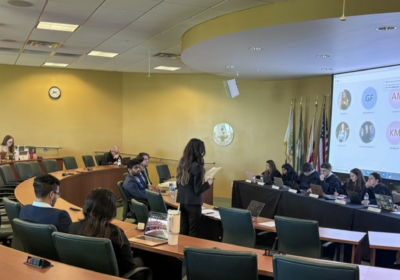Juveniles should still be shackled in court
A decision by the Florida Supreme Court banned the use of shackles, handcuffs or other restraints on juveniles appearing’in court unless a judge’determines on a case-by-case basis that it is necessary.
It used to be common practice in the Florida Department of Juvenile Justice (DJJ) to restrain all youths while being transferred to court and appearing in court. The Court called ‘the indiscriminate shackling of children’ in the state ‘repugnant, degrading, humiliating and contrary to the stated primary purposes of the juvenile justice system,’ in its decision.
Restraints are no more degrading for minors than adults. Handcuffs and ankle chains serve a practical purpose of preventing youths from harming others or attempting to escape. The burden of proof should not be on the courts to restrain potentially risky juveniles.
Though all seven justices’approved the new rules, Justice Charles Canady partially’dissented. By ‘imposing such a presumption against the use of restraints on juveniles who have been placed in detention, the new rule will unduly hamper the trial court’s ability to maintain the safety of court personnel, the juveniles’ themselves and any bystanders in the courtroom,’ Canady said in the decision.
It is common practice in some parts of Florida to restrain adults when transporting them from detention centers to courtrooms.
Public Defender Bill White said to Jacksonville’s Financial News and Daily Report that while adults are typically restrained in court in Duval County, restraints are usually removed for jury’trials because they can imply guilt to jurors.
However, in the Florida Juvenile Justice System, youths do not appear before juries but a judge.
The fact that they were held in a secure detention center should be justification enough for restraining minors in court. Juveniles are only securely’detained if they score high enough on a risk assessment instrument to be considered a threat or flight risk, according to a report by the Florida Senate Committee on Criminal Justice.
Information in the report from the DJJ broke down the reasons for admission to detention centers for the 2008-09 fiscal year. Thirty-one percent of those admitted were considered public safety risks and 23 percent were considered flight risks.
The system should not be soft and risk public safety. Appearing before a judge shackled is not humiliating, and if there is reason to shackle juveniles on their way to court, there is nothing wrong with shackling them when they get there.






